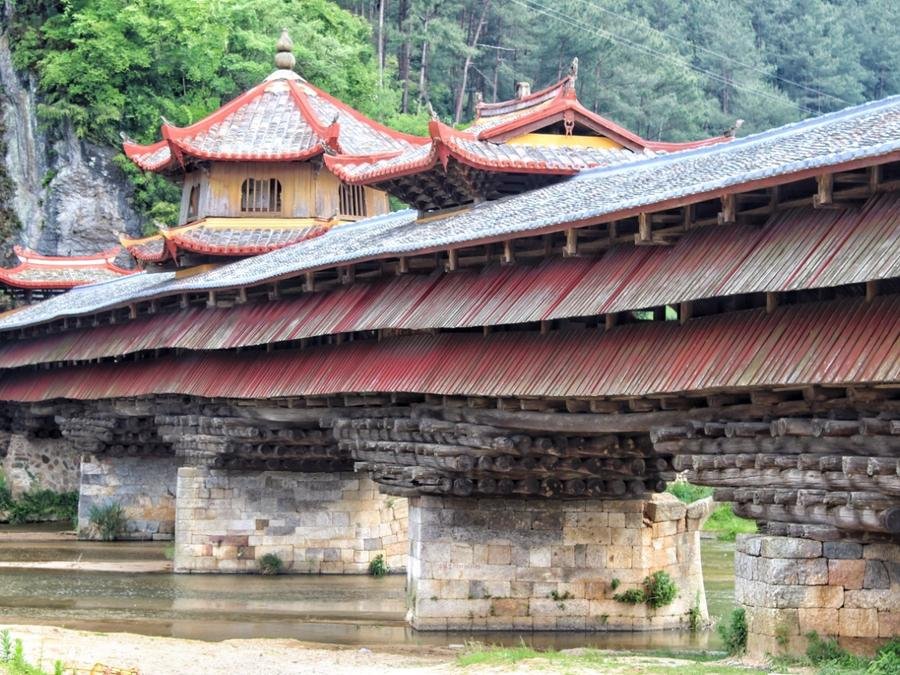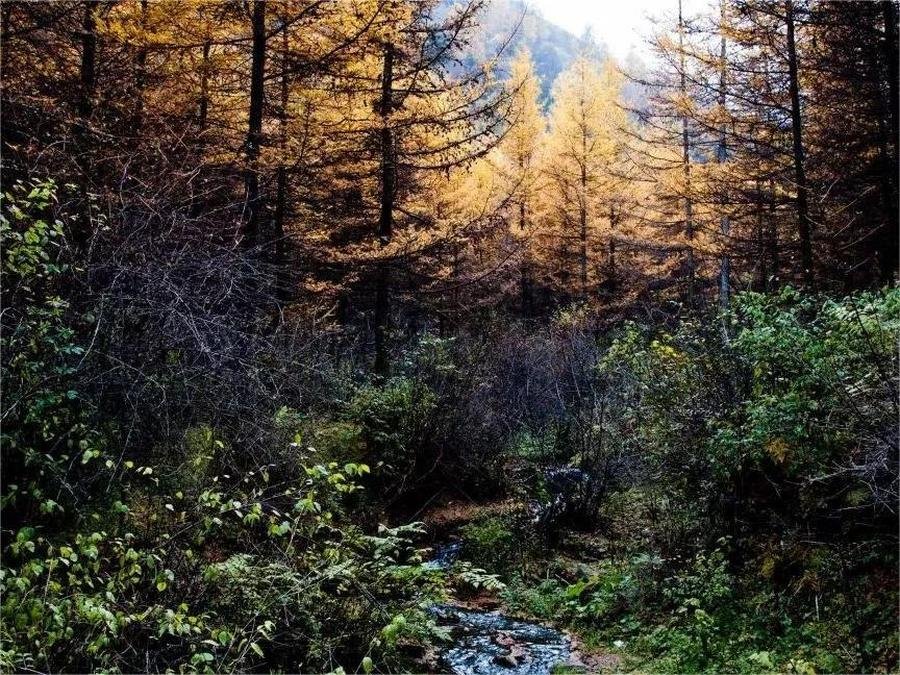Xinglong Mountain (兴隆山), the closest national-level natural forest reserve to Lanzhou, is a rare gem of lush landscapes in the arid northwest. Historically known as “Qiyun Mountain (Cloud Resting Mountain” due to its frequent, expansive white clouds, it has long been celebrated as a notable scenic spot in Longzhong (the ancient name for Gansu), often hailed as the “Number One Mountain in Longyou.”
The main peak of Xinglong Mountain comprises two summits: the eastern peak, Xinglong, stands at an elevation of 2,400 meters, and the western peak, Qiyun, rises to 2,500 meters. Between these peaks lies Xinglong Gorge, spanned by the Yunlong Bridge, which dramatically arches over the valley. Qiyun Peak is home to several temples and pavilions, including the Hunyuan Pavilion, Chaoyun Temple, and Leizu Temple. On Xinglong Peak, visitors can find scenic spots such as Erxian Terrace, Taibai Spring, the Great Buddha Hall, Xisong Pavilion, and Dilei Pavilion.
Historically significant, Xinglong Mountain is reputedly the site where Genghis Khan passed away in 1227 during his campaign against the Western Xia Dynasty. His clothing, armor, and personal items were placed here. In 1939, Genghis Khan’s coffin was transported to Xinglong Mountain and secretly stored in the Great Buddha Hall. It remained there until August 1949, when it was moved to Kumbum Monastery in Qinghai. In 1954, the Inner Mongolia Autonomous Region government relocated his remains to a newly constructed mausoleum in Ejin Horo Banner, Ordos City. This historical connection has further elevated Xinglong Mountain’s prominence.
Table of Contents
- Basic Information
- Location and Transportation
- Highlights of Xinglong Mountain
- Vlog about Xinglong Mountain
- Other Attractions in Lanzhou Suburbs
Basic Information
| Estimated Length of Tour | 1 day |
| Ticket Price | East Mountain Area: 40 RMB West Mountain Area: 40 RMB |
| Opening Hours | 8.00 – 17.00 |
| Telephone Number | 0086-0931-5251081 |
Location and Transportation
Xinglong Mountain is located in Gansu Province, 6 kilometers southwest of the county seat of Yuzhong County, and 45 kilometers from Lanzhou city center. To reach Xinglong Mountain, you can take a bus from the Tianshui Road Cross Bus Station (天水路十字汽车站) in Lanzhou to Yuzhong County (榆中县) for 8 yuan per person, which takes about 40 minutes. From Yuzhong County Bus Station, transfer to a minibus to Xinglong Mountain, costing 5 yuan per person.
Highlights of Xinglong Mountain
Yunlong Bridge

Yunlong Bridge is a picturesque wooden arch bridge, designed in the style of a corridor. The bridge, with its delicate and intricate structure, resembles a rainbow spanning across a mountain stream. It measures 155 meters in length and 3 meters in width. The bridge features seven pavilions along its length, with pavilions at both ends, characterized by upturned eaves and hipped roofs. The interior of the bridge is adorned with carved beams and painted rafters, and the roof is covered with glazed tiles. Yunlong Bridge connects the two peaks of Qiyun and Xinglong, thus earning its name, which means “Cloud Dragon Bridge.”
Originally built in 1763 during the 28th year of the Qianlong Emperor’s reign, the bridge was initially named “Yingshan Bridge,” signifying the welcoming of good people from all directions. Over the years, it was repeatedly destroyed by floods and subsequently rebuilt. In 1900, during the 26th year of the Guangxu Emperor’s reign, Cen Chunxuan, the governor of Gansu, allocated funds for its reconstruction. The county magistrate, Chen Chang, renamed it “Yunlong Bridge.” This bridge is not only one of the ancient architectural structures of Xinglong Mountain but also a symbol of the mountain’s historical heritage.
Great Buddha Hall

The Great Buddha Hall features a central hall flanked by two side halls. The structure is adorned with heavy eaves and interlocking brackets, with beams and rafters intricately painted in blue, green, and red, giving the hall a solemn and majestic appearance. In front of the hall stand three towering spruce trees, and within the courtyard, there are five yurts. The calligraphy above the main hall, “大雄宝殿 (Mahavira Hall),” is the work of Zhao Puchu.
Inside the main hall, three Buddhas are enshrined: Shakyamuni Buddha of the Sahā world in the center, Medicine Buddha of the Eastern Pure Lapis Lazuli world on the left, and Amitabha Buddha of the Western Pure Land on the right. In front of Shakyamuni stands a statue of Genghis Khan, whose name in Mongolian means “Great Leader like the Ocean.” The statues are crafted from clay and adorned with gold, with smooth lines and lifelike features, representing the exquisite work of artisans from Pingliang, Gansu. Additionally, in front of the Great Buddha Hall is the “Genghis Khan Cultural Relics Exhibition Hall,” which chronicles the life and achievements of the great Mongolian leader.
Chiang Kai-shek Residence

In 1942, the Gansu Provincial Government, anticipating a visit from Chiang Kai-shek, commissioned a specially designed, quaint villa at Xinglong Mountain. This structure, known as the Chiang Kai-shek Palace, features a unique design and an air of solemn elegance. The villa is structured as follows:
- Ground Floor: This level includes a living room, a waiting room, an aide’s room, and a conference room.
- Second Floor: Here, visitors will find another conference room, a confidential office, a bedroom, a dressing room, and a bathroom.
In August 1943, Chiang Kai-shek, his wife Soong Mei-ling, and his confidential secretary Chen Bulei, among others, stayed in this residence for six days. During their stay, Chiang Kai-shek would take leisurely strolls with his wife, sometimes supported by a cane, or ride a sedan chair up the mountain for sightseeing. Notably, Chiang Kai-shek presided over the Northwest Political and Military Conference during this time, making the residence a significant historical site.
Guantan Valley

The Guantan Valley Tourist Area is part of the Xinglong Mountain National Nature Reserve. Located 25 kilometers southeast of Lanzhou, within the boundaries of Heping Town, the area spans 342 hectares and is primarily focused on forest ecological tourism. Historically, the valley was known as the Sufu Guantan, the site of the Ming Dynasty’s Su Wang’s horse ranch. The area still has a boundary marker labeled “Mu Ma Guantan” (Pasture Officer’s Beach).
The valley is characterized by its picturesque landscape, with mountains flanking a serene valley and paths leading into tranquil gorges. Although the mountain formations here lack the dramatic peaks of Xinglong Mountain, they are rich in natural woodland charm. The dense forest cover, which reaches 86.2%, transitions from planted coniferous forests at lower elevations to secondary broadleaf mixed forests and alpine shrubs as one ascends.
The forest environment is vibrant and ever-changing, with a variety of trees, shrubs, and grasses that create a rich tapestry of seasonal colors. The pristine environment is enhanced by mountain springs that flow through the valley, converging at Dripping Water Cliff to form a unique waterfall. This scenic spot, with its lush greenery and cascading water, provides a refreshing escape and leaves visitors enchanted by its natural beauty.





